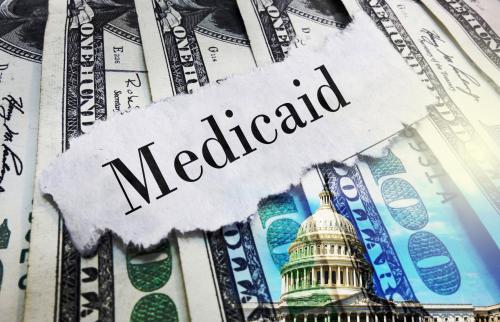In the quixotic pursuit of fiscal sanity, the House is desperately trying to cut more than $50 billion in spending over five years. But that’s a measly $10 billion a year, at a time when federal deficits are hovering between $300 billion and $400 billion and are projected to double by 2015.
Overall federal spending is a mind-numbing $2.6 trillion a year. At the same time, GOP House leaders plan to extend tax cuts, primarily for the wealthiest Americans, at a cost of $70 billion over the same five years. This is the equivalent of trying to kill a tiger with a flyswatter. Most Americans have tuned out the ever-scintillating details of fiscal policy because the deficit seems so incomprehensible and intractable. But elementary school math shows that the current House approach is symbolic at best:
1) Cutting $10 billion out of $400 billion slices a mere 2.5% off the deficit
2) Shaving $10 billion off $2.6 trillion cuts federal spending by 0.4%.
3) $70 billion in tax cuts for the wealthy, minus $50 billion in spending cuts, means that the deficit will actually increase by $20 billion.
Deficits are a very real and growing problem, particularly as healthcare costs soar. Baby boomers start retiring in a few years, and the three big entitlement programs (Medicare, Medicaid and Social Security) are on track to gobble up all federal revenues by 2030. In the long run, our options are stark: Either we shut down the rest of government, raise taxes by 50% or put our economic future at great risk.
The House proposal, among other things, would slash Medicaid benefits by $11.9 billion and student loans by $14.3 billion, at a time when the poverty rate has risen four years in a row and the middle class is increasingly being priced out of college. All of this money — and more — will then disappear into the bank accounts of wealthy individuals, assuming the tax portion of the package is also enacted. Real deficit reduction will require curbing the big-ticket spending items. Medicare, Medicaid and Social Security consume more than $1 trillion of public spending each year — a total that makes $11.9 billion look like chump change.
Many experts believe that Social Security can be fixed by a combination of raising the eligibility age, relating benefits more to income and raising the income cap on payroll taxes.
However, the ticking time bomb in our economic future is healthcare costs. They’ve been rising 2.5 percentage points faster than GDP growth since the 1960s, ballooning the costs of Medicare and Medicaid. If we are not to sink slowly into a sunset of stagnating living standards, public and private healthcare spending needs to be the No. 1 item on our deficit-reduction agenda. Healthcare inflation has been driven by technological advances, an aging population, fears of malpractice suits, unhealthy lifestyles, surprising lack of attention to medical best practices and a failure to make healthcare costs transparent to consumers.
Addressing these problems will be tough but unavoidable. Congress could delay the Medicare prescription drug bill — the biggest entitlement in 40 years — and save at least $40 billion a year. Over five years, we could save $52 billion by reducing federal highway aid to the level set in 1997. And sacrificing bridges to nowhere and other pork could save tens of billions.
Congress is under pressure to “do something,” and the Senate last week anted up $35 billion in cuts of its own. But both proposals aren’t much more than window dressing. It’s time to get serious. The longer we wait, the more calamitous may be the day of reckoning, and the more we saddle our children with the fiscal failures of our inaction.
The Brookings Institution is committed to quality, independence, and impact.
We are supported by a diverse array of funders. In line with our values and policies, each Brookings publication represents the sole views of its author(s).



Commentary
Op-edChump-Change Budget Cuts
November 12, 2005